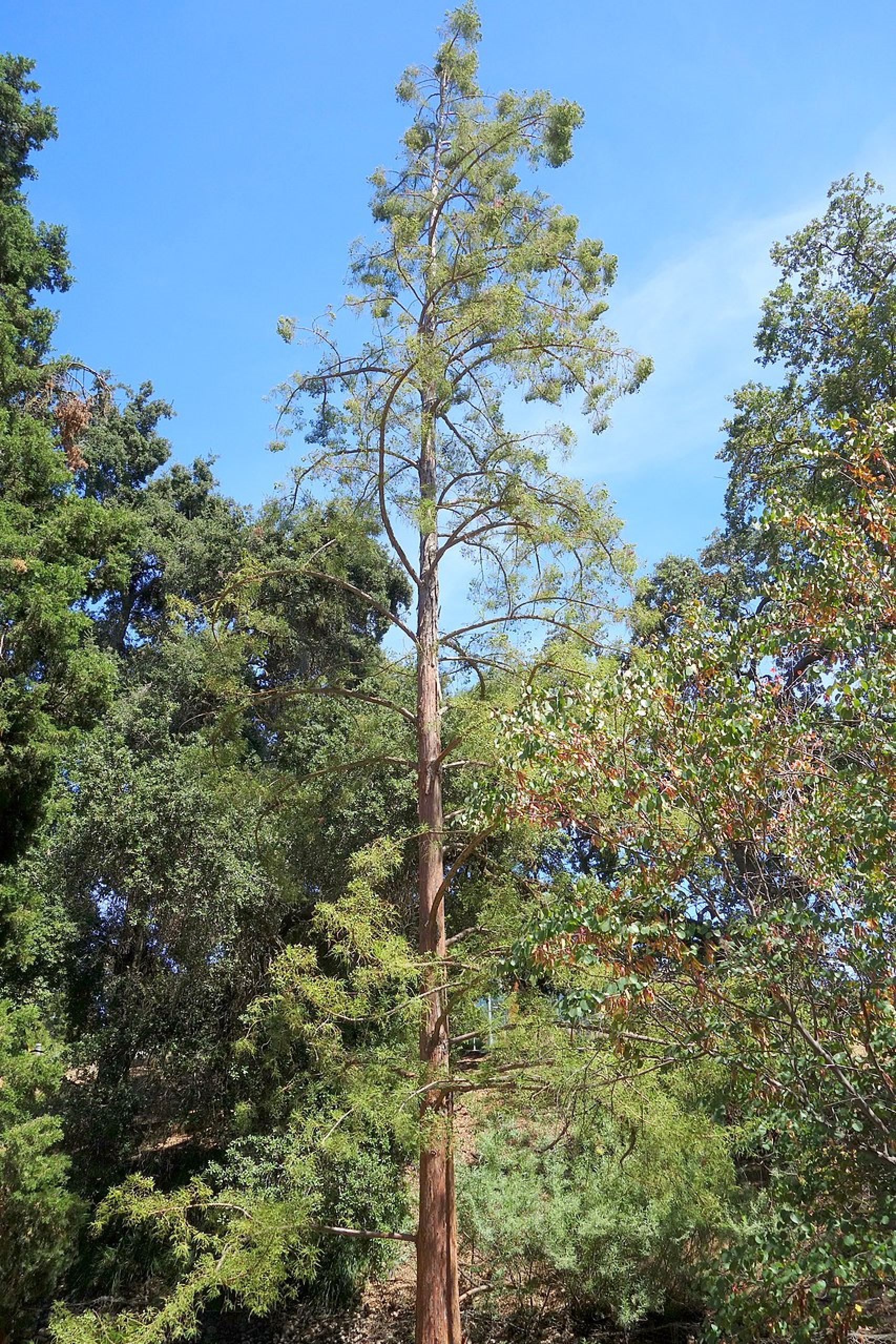
Incredibly rare trees at the Hong Kong Golf Club should be protected for future generations
- The Hong Kong Golf Club is one of just two places in the world where original stands of the Chinese swamp cypress, a national treasure, remain
- Rather than turning the golf course into public housing, the site offers a sizeable nature reserve and arboretum for future generations to enjoy
Among Hong Kong’s important contributions to national heritage is the Chinese swamp cypress, also known as Canton water pine (Glyptostrobus pensilis).
Forests of these trees once grew right across this part of China. But as human settlement accelerated around the Pearl River estuary from the 12th century onwards, existing habitats were steadily decimated.
Low-lying, generally swampy land – well-suited for wet-rice cultivation after implementation of drainage – was extensively cleared.
As human populations expanded, and pressure on arable land correspondingly increased, more natural habitat was lost.

In the New Territories, reliable botanical records for this species begin with S.T. Dunn and W.J. Tutcher’s Flora of Kwangtung and Hong Kong (1912).
Two venerable trees, believed to have been planted during the Ming dynasty (1368-1644), were recorded at Tai Hang Tsuen, near modern-day Hong Lok Yuen. Locally famous, with girths of between five and six feet, both died after road building works were carried out nearby.
Ecology advisers divided on public housing plan for luxury Hong Kong golf course
Already scarce well over a century ago, only two other locations for the Chinese swamp cypress were noted – “Hatsun” (Ha Tsuen) near Lau Fau Shan, and Canton.
It is believed that there are just two groves where original stands of this critically endangered species remain in the whole of China; one in Fujian, and the other on the Hong Kong Golf Club grounds, near Sheung Shui.
A golf course was first established on this site in 1911. Over the next three decades, ready accessibility from improved road transportation, and in particular the Kowloon-Canton Railway, which began service in 1910, steadily increased the Fanling-Sheung Shui area’s popularity among Hong Kong’s urbanites who preferred some form of countryside living.
In China, the Chinese swamp cypress is designated by the State Council as one of the First-Class Species of National Protected Key Wild Plants
But from 1911 onwards – with the general exception of fairways – the golf club landscape became a botanical time capsule, largely unchanged since the New Territories was leased to Britain in 1898.
Significant human interference, which completely transformed the rest of the New Territories in the following decades, was absent.
As a result, species such as the Chinese swamp cypress, fortuitously ignored and forgotten, remained unmolested.
In Hong Kong, these trees continue to grow in their original marshy habitat, itself probably a tiny relict survivor from ancient times – in effect, they are living fossils.
Some examples at Sheung Shui are estimated to be around 200 years old.
Will plan for flats at golf course become political test for Hong Kong’s leader?
Remnant presence here contributes to wider understanding of how these vanished freshwater wetlands became rich paddy lands, which then contributed to the development and expansion of Chinese civilisation.
In China, the Chinese swamp cypress is designated by the State Council as one of the First-Class Species of National Protected Key Wild Plants.
Seen in this context, these national treasures must be preserved for future generations.
In fragmentary form, survival here represents a living link to a once-vast, now completely vanished natural landscape when these trees extended across the wetlands of Southern China from the Hong Kong region to Vietnam and Laos.
Pollen samples in various locations make clear just how widespread these species once were.
Where to retire? Portugal has long been seen a good option for Hongkongers
In excavation work in Guangdong, stumps of centuries-old trees have been uncovered – a form of botanical archaeology that requires further research.
Precautionary principles must prevail here; protection protocols precede more extensive research as a pathway towards better understanding this little-appreciated natural and cultural landscape of national significance.
Populist campaigns against preservation of the golf course maintain that rapid expropriation of this perceived recreational preserve for the wealthy would allow a cost-effective, quick-fix solution for chronic public housing supply shortages.
But when the Northern Metropolis scheme eventuates, accessible nearby parkland will be vital.
Remnant forests and wet areas with diverse habitats for a variety of flora and fauna, and stretches of tree-studded parkland and extensive grass-covered areas, offer a sizeable nature reserve and arboretum for Hong Kong’s future generations to enjoy.
This unique landscape can provide multiple benefits and uses, all protected and paid for by the existing golf course.

